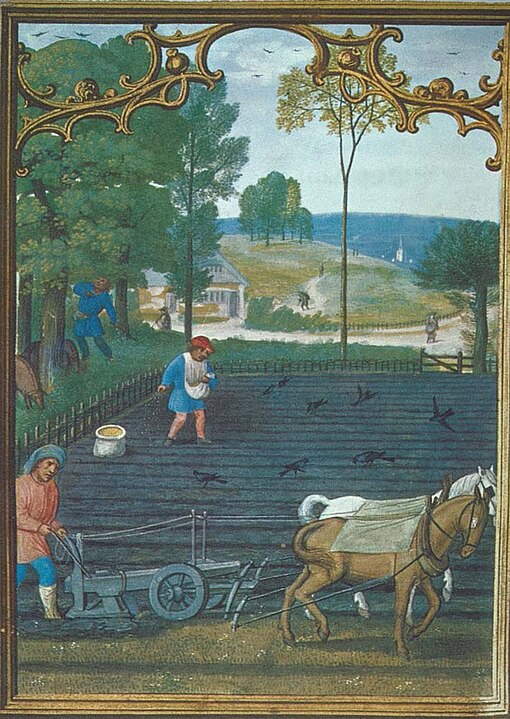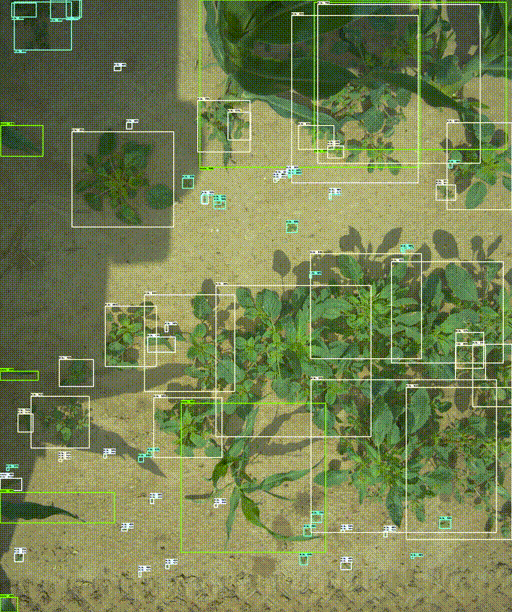Machine learning is imperfect. That’s why it’s ideal for agriculture.
Elliott GrantFounder, CEO
| 6 min read
Rather than turn farms into factories, let’s use tools that can handle nature’s complexity.
Nature is more subtle, more intricate, more elegant than what we are able to imagine … but the documentation is terrible.
With apologies to Carl Sagan, this quip is a pretty accurate description of our attempts to understand and control complex natural systems, like agriculture. Despite lacking a complete user guide to agriculture, the achievements of modern food production are truly remarkable — thanks to dedicated breeders, scientists, agronomists and farmers. But there’s still a lot of room for improvement. For example, 40 percent of fertilizer is wasted due to imprecise application. On average, crop yields are 66 percent lower than their genetic potential due to losses from abiotic stresses (like the weather and soil salinity) and biotic stresses (like weeds and diseases). Spacing, planting dates, varietal selection and many more decisions are made based on educated guesses. And that’s before we even get into crop genomes. Wheat's genetic code has 17 billion base pairs — that’s almost six times more DNA than humans have. Suffice it to say, wheat experts can’t possibly understand what most of those genes do yet.

The Medieval Plow (Moldboard Plow)
Indeed, the history of human food cultivation has been a 12,000-year exercise in cumulative trial and error and the development of rules of thumb. Seeds don’t come with an owner’s manual. Even the most consequential breakthroughs — such as Norman Borlaug’s development of semi-dwarf, high-yield, disease-resistant wheat at CIMMYT in the 1950s — came from educated guesses, tenacious experimentation and a splash of luck. Although we understand some of the machinery of plants, the whole ecosystem is simply too subtle and intricate to reduce to deterministic rules. Agriculture knowledge has fed the world using heuristics, learned pragmatically and iteratively through empirical observation. When we can’t deductively reason exactly why something happens — but it happens most of the time — then it’ll do.
Which brings us to machine learning. Machine learning (ML) is a branch of artificial intelligence. The term refers to the technique of creating algorithms that can make predictions without having been explicitly programmed to do so. A computer (the machine) uses large amounts of data to ‘learn’ what the terms and weights should be in an algorithm to achieve the best performing model results. If you want an ML model that can count soybean pods, then you collect a large data set of labeled soybean pod images, and the algorithm learns to discriminate pods from leaves, stalks, dirt, cats, dogs, bicycles and so on. To train an ML model to predict the yield of a crop, you collect a huge and diverse dataset of things like seed variety, planting date, spacing, soil characteristics, weather, and fertilization, and coax the algorithm to figure out how to weigh each of these terms to match the known yield outcomes. In the first example, ML is doing something that is easy for a human to do (count objects) but wildly impractical at scale. In the second example, ML is doing something that is hard for a human to do (see patterns in billions of data points) but is easy for the computer. In both examples, however, the ML is not explainable. Meaning, you can’t look at an algorithm with a million parameters and understand why it works.
Seeds don’t come with an owner’s manual.”
In the field of epistemology — the study of knowledge — tacit knowledge refers to things that humans know but cannot explain how they know them. Riding a bike, intuiting someone’s mood, making a quick medical diagnosis — these are things that humans do well, but can’t explicitly describe how. We accept this impenetrability of human learning. Interestingly, in some respects, ML is similar. It may have a degree of explainability — but it is imprecise and inscrutable.
In some applications, such as medical diagnoses, approving bank loans or evaluating job applicants, you’d like to know why the ML under the hood is making certain decisions. Hidden biases, mistakes and ‘hallucinations’ can be incredibly consequential. There is an understandable unease about the ‘black box’ nature of ML algorithms — and these types of applications are rightly held to high and rigorous testing and performance standards. There are applications in agriculture, however, where ML — even inscrutable ML — can be valuable.

Beginning in 2021, Mineral began working with the Alliance of Bioversity International and CIAT, a non-profit agricultural research organization, to accelerate their work to understand and uncover hidden crop traits within the world’s largest bean collection.
Humans are not especially well suited to many of the tasks ML can do in agriculture (such as counting millions of leaves, classifying weeds in milliseconds or counting billions of pixels of wheat from a satellite image). Accuracy in these tasks need not be 100 percent — 90 percent may be good enough. An X-ray reading algorithm that misses 1 in 10 tumors is junk. But a machine that can look at a field of millions of plants and find and classify 90 percent of the weeds is useful compared to having a person walk through the field. What really matters is accuracy at scale.
We have discovered that ML and human experts can complement one another. Take yield forecasting as an example. Human experts combine intuition and heuristics to make predictions from a relatively small amount of data. ML algorithms crunch billions of numbers to make predictions, but lack intuition. We have noticed how human experts reflect on — and incorporate — the suggestions of the ML algorithm to improve their performance. It’s like getting a second opinion or having a tennis coach who points out anomalies in your backhand.
Agriculture is messy and its data is noisy. Unlike a factory, where manufacturing engineers work tirelessly to eliminate variance and tighten tolerances, a farm field is a living, breathing, staggeringly complex ecosystem. No two fields are alike. Soil varies foot by foot. Plants grow and move. A statistical approach to decision-making (as opposed to mathematical certainty) is the best we can hope for — and at the end of the day, ML is statistics. Rather than try to eliminate variability in the field in a futile pursuit of uniformity, it’s preferable to have tools that can improve decision making despite complexity.
Farm decision-making is multimodal. What that means is a farmer or their agronomist is intuitively combining multiple different modes of data in their brain. Numeric data such as rainfall and time series data like temperatures; knowledge of herbicides; visual data such as plant appearance; sensory data such as subtle smells or tastes, sounds and textures — these are all subconsciously integrated (A crop breeder recently mentioned to me that he could tell when the canola plants he was growing were stressed by their smell). Until recently, ML models could not handle more than one type of data. Now, ML models are emerging that can handle many different data types (although measuring taste, smell and texture in a way that can be fed to an algorithm is still hard).

No two fields are the same. Agriculture needs tools that improve decision making despite its domain complexity. ”
Nature didn’t give us good documentation — so humans have to make educated guesses. As a result, we make mistakes and suboptimal decisions. ML models aren’t infallible either — and will make mistakes. It is important that we continue to develop ML to reduce biases, and improve explainability and factuality. But what agriculture has proven is that despite uncertainty, we can continuously improve. My belief is that as the agriculture industry embraces ML thoughtfully and responsibly — i.e. not expecting perfection, being aware of bias, using it as a co-pilot and pointing it to applications that are impractical for humans — then we collectively will accelerate farmland productivity, climate adaptation and the discovery of better ways to produce food.
This is farming in the era of ML.
